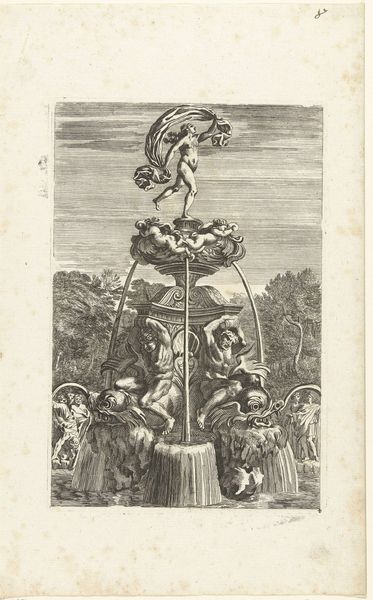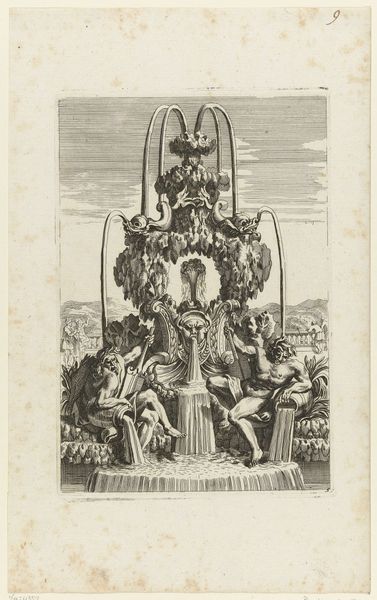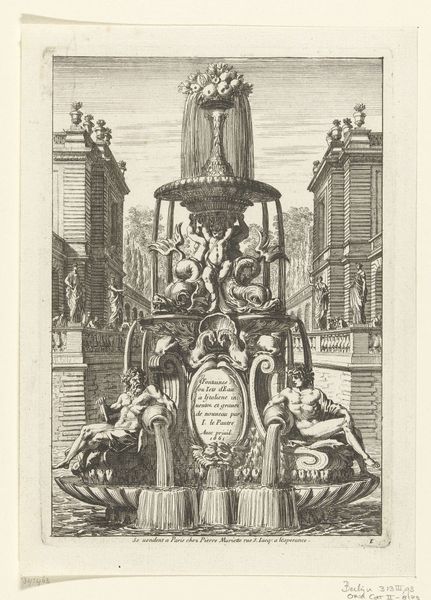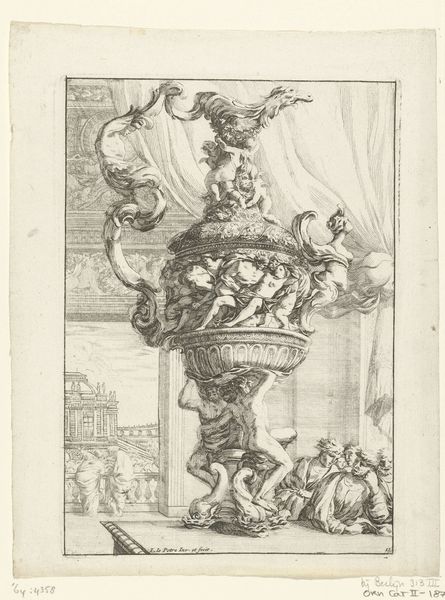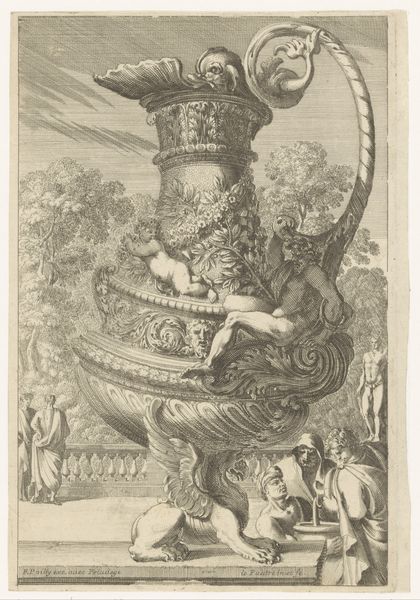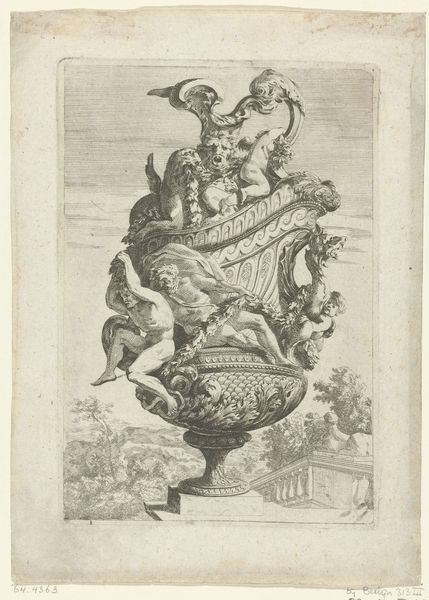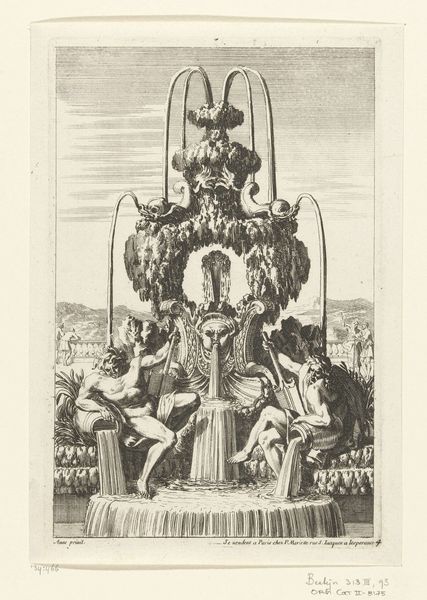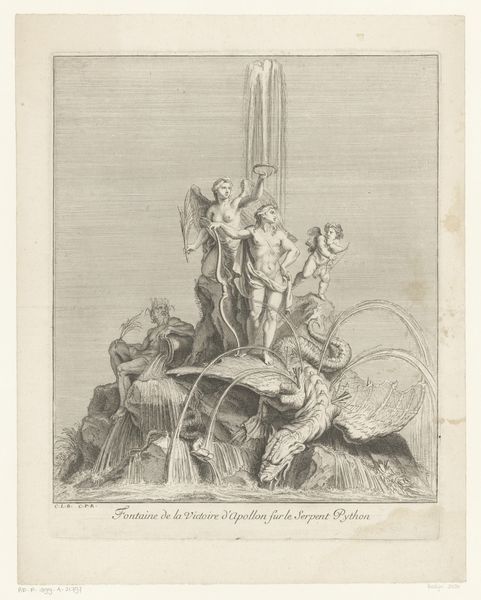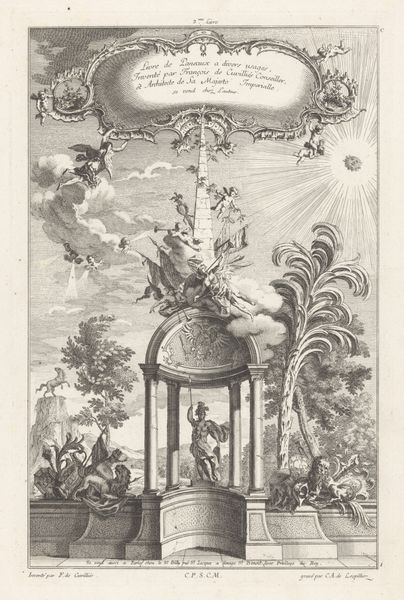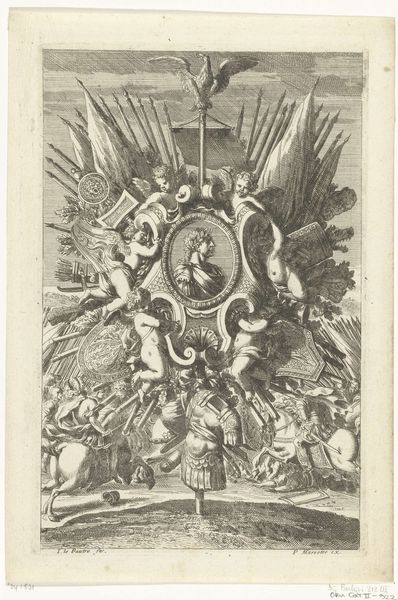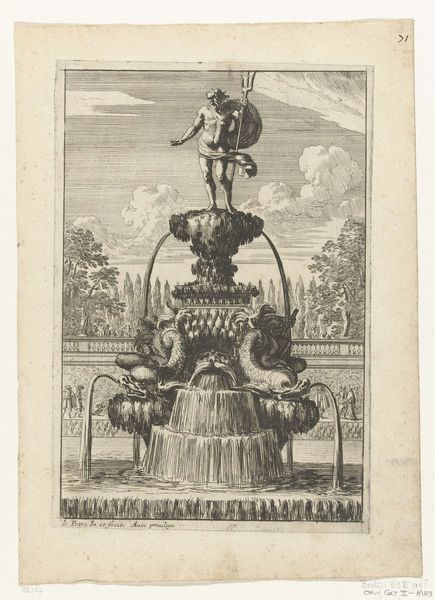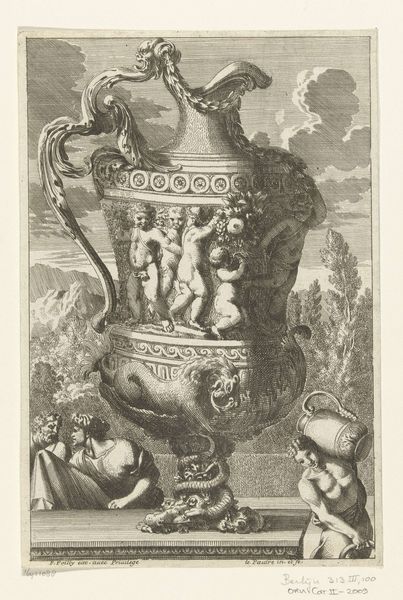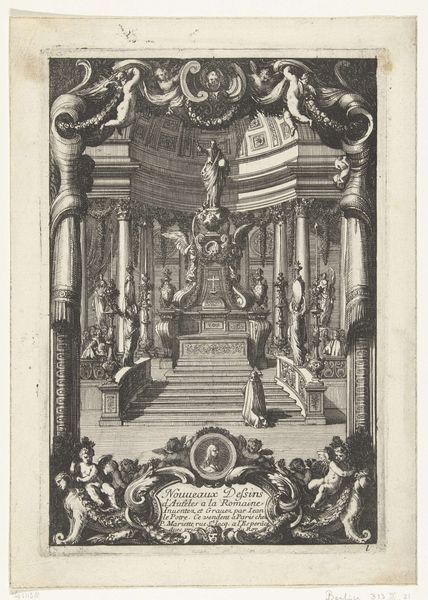
metal, engraving
#
baroque
#
metal
#
old engraving style
#
landscape
#
figuration
#
history-painting
#
nude
#
engraving
Dimensions: height 226 mm, width 152 mm
Copyright: Rijks Museum: Open Domain
Editor: So this is "Fontein met beeld van Fortuna," a metal engraving created in 1661 by Jean Lepautre. It’s currently held at the Rijksmuseum. The overwhelming detail is quite astonishing, really. What stories can you uncover within it? Curator: This elaborate fountain scene teems with the imagery and ideology characteristic of its time. Consider Fortuna herself, precariously balanced, scarf billowing, atop this elaborate structure. What does that evoke for you? Editor: A sense of… precariousness, definitely, and the power of Fortune, good or bad. That scarf seems to symbolize both freedom and perhaps a bit of chaos. Curator: Precisely. In this Baroque context, Lepautre uses Fortuna to represent the capriciousness of fate and worldly success. Below her, we see river gods, tritons, and muscular figures – each element deliberately chosen to convey abundance, power, and the harnessing of nature's forces. Note how the water, an element of constant flux, flows through and animates this display. Doesn't it remind you of a stage? Editor: Yes! A very theatrical stage, definitely designed to impress. What was the purpose of images like this? Curator: Prints like these circulated widely, disseminating artistic ideas and architectural styles. They functioned as a kind of aspirational advertisement, showcasing lavish designs and reinforcing the social hierarchy. Consider the patrons who would have commissioned and collected such images. What status and values are on display? Editor: An undeniable display of wealth, power, and classical learning – an ambition for a Golden Age, maybe? Curator: Exactly. These symbols connect the present to a rich cultural past and a hoped-for glorious future. This piece exemplifies how carefully chosen symbols reinforce specific world views, even now. Editor: I see it differently now – the fountain is more than just a pretty picture. It's really a stage setting for power. Curator: Indeed, it encourages us to look beyond surface appearances and delve into the enduring language of images and symbols.
Comments
No comments
Be the first to comment and join the conversation on the ultimate creative platform.
